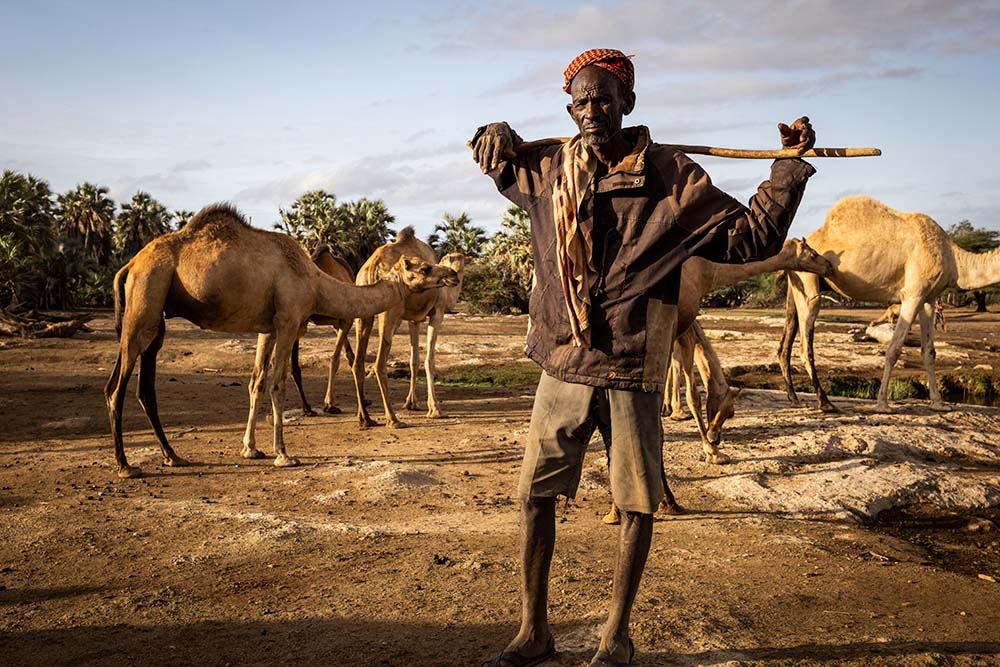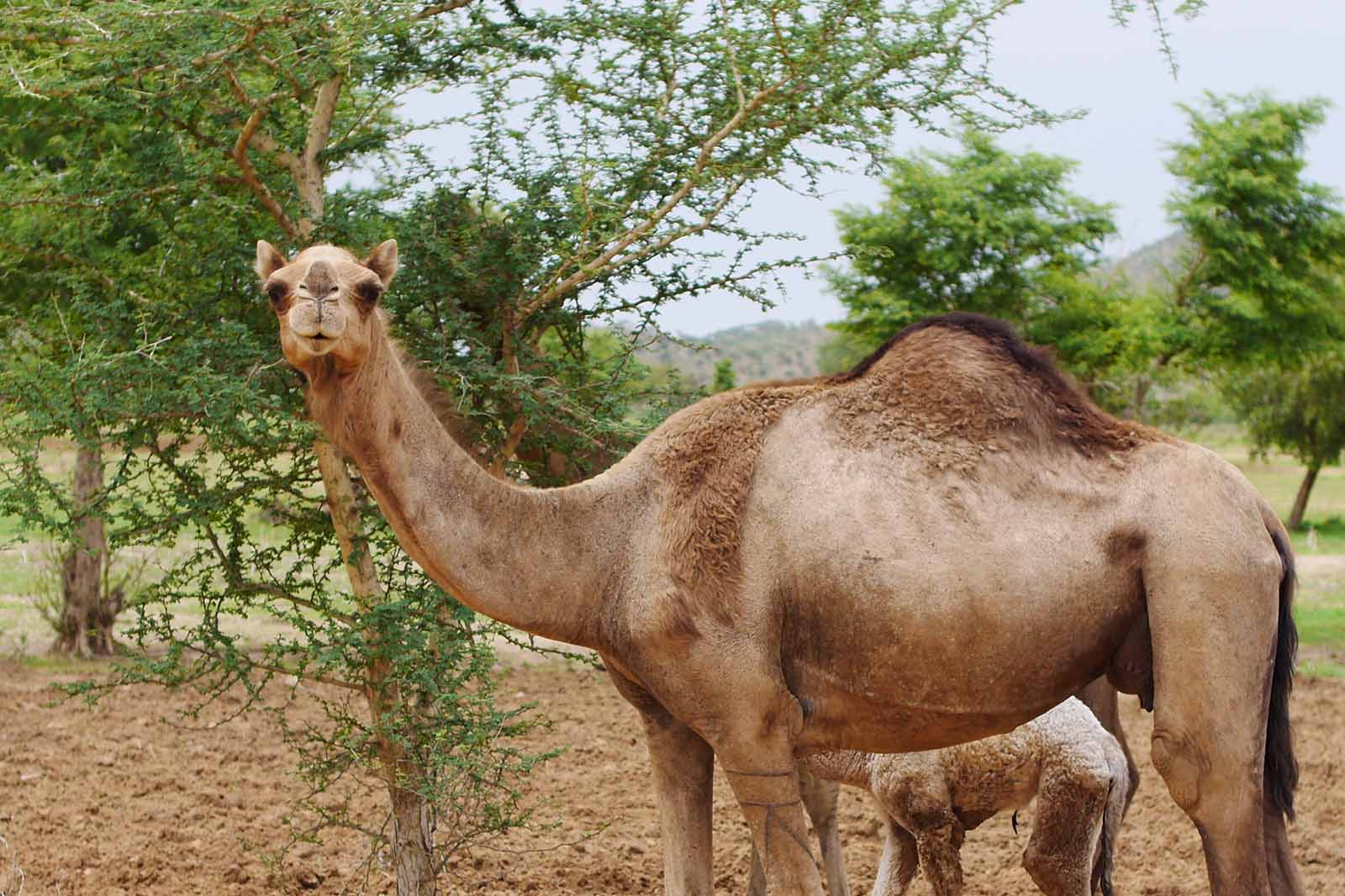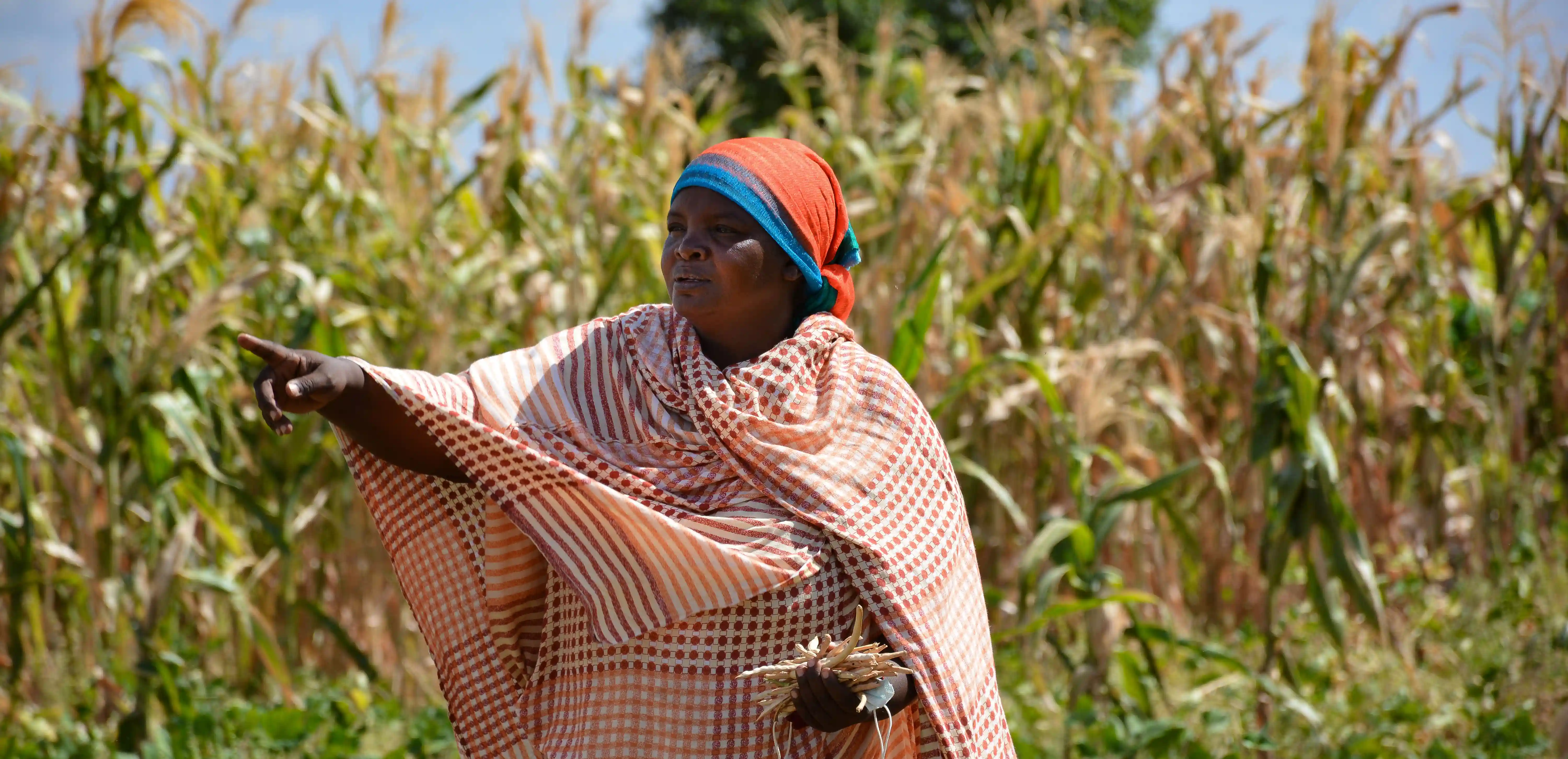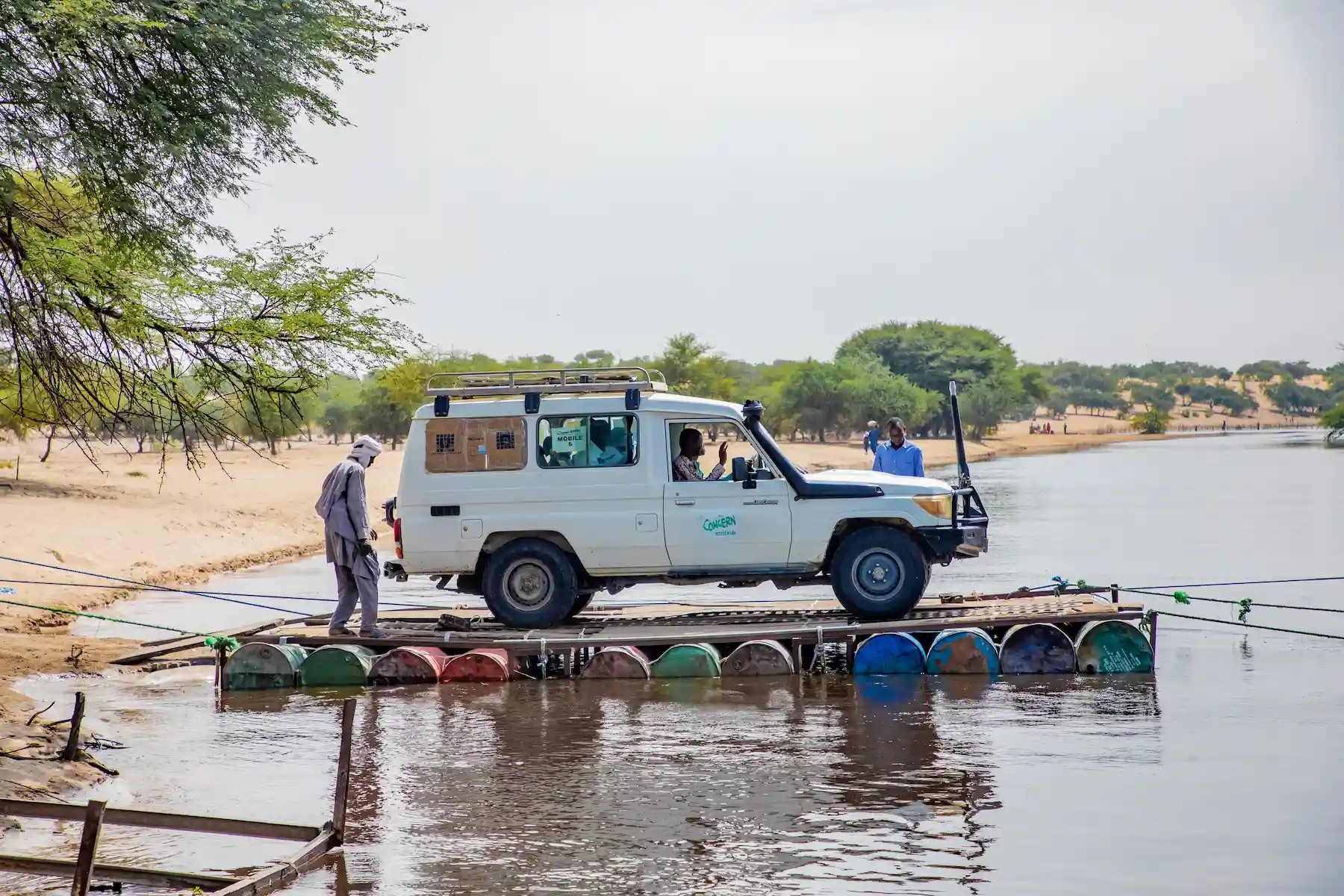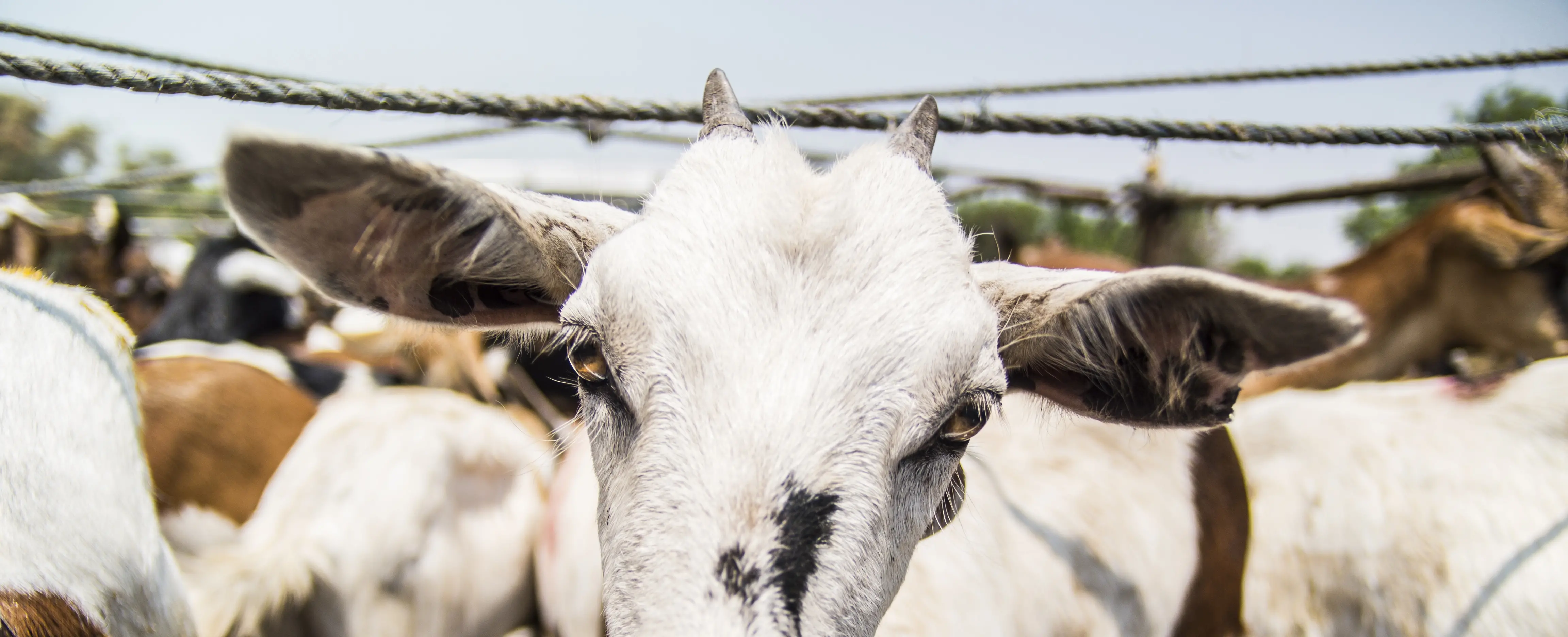They are the unsung heroes of the quadrupedal world, and for many of the communities we serve, Camels are so much more than just the "Ship of The Desert". This is our humble homage to these lanky, long-lashed lovelies.
Not just cartoon characters
With their big goofy heads and their cantankerous reputation, Camels project a vaguely comedic air. Let’s face it, they are GIF gold. But there’s a lot more to these bifurcal behemoths than just their meme value or their tiktok cachet. Camels are truly amazing, so we’ve set aside some time to create a humble tribute to these be-humped, even-toed, ungulates who stride with ease and grace across some of the world’s harshest environments.
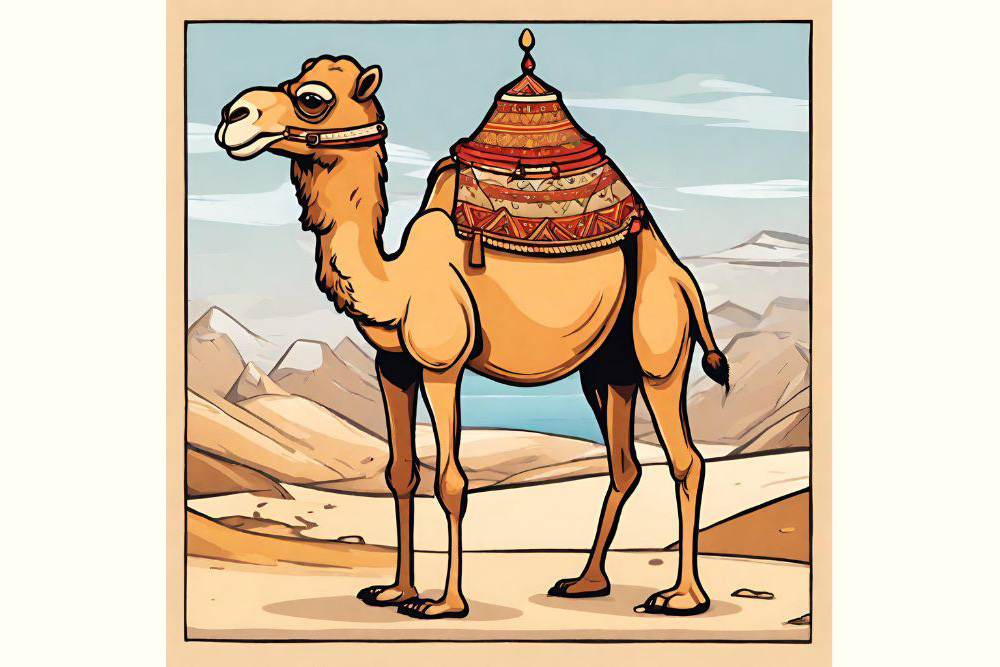
Camels come fully loaded:
🐪 Long eyelashes to help to keep sand out of their eyes.
🐪 Closable nostrils to stop sand from going up their schnozzle.
🐪 Small ears covered in hair to prevent sand and dust from getting in.
🐪 Wide feet and thick leathery pads to help them to walk on hot sand without sinking.
🐪 A split upper lip, with each part separately mobile.
🐪 A three-chambered stomach.
🐪 A “hump” (or two) on their back containing reserves of fat for use in lean times.
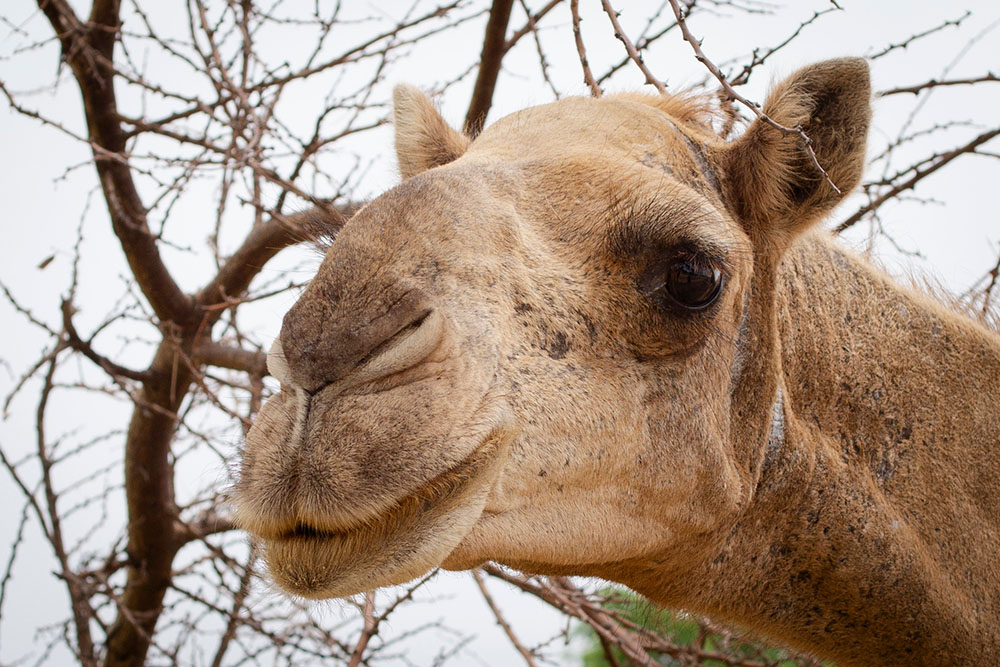
How we intersect
Concern is not a veterinary organization — our mission is very much focused on the improvement of the human condition. But in many of the places we operate, Camels play a key role in the lives of entire communities. In fact, Concern works in 7 of the top 10 Camel countries in the world, so we definitely have some collective insight to share. In the words of one of our Chad-based colleagues, "Camels are not just animals, they are our patrimony, our heritage".
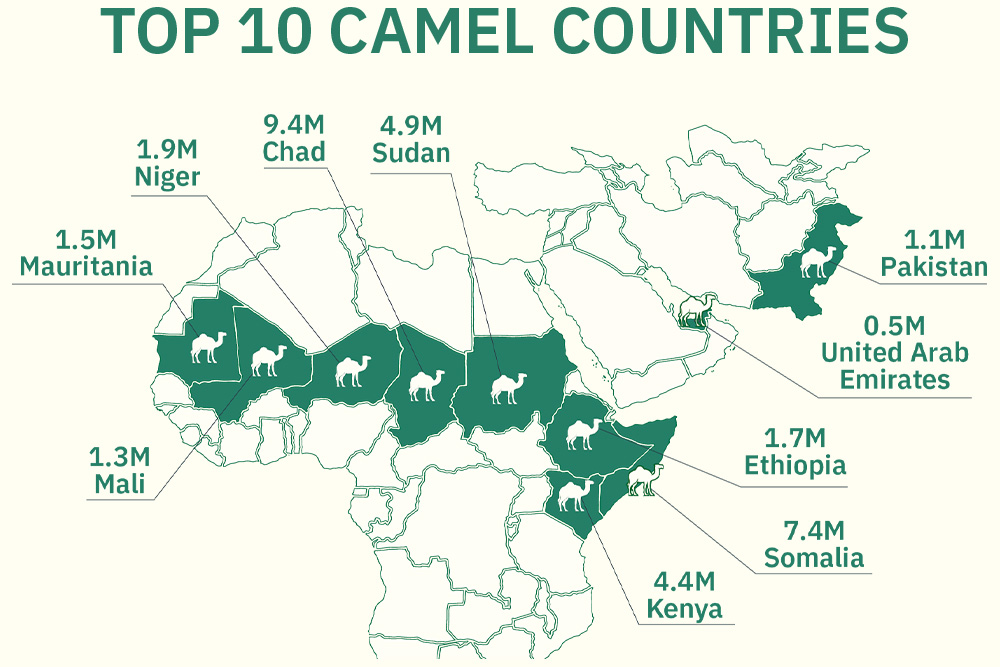
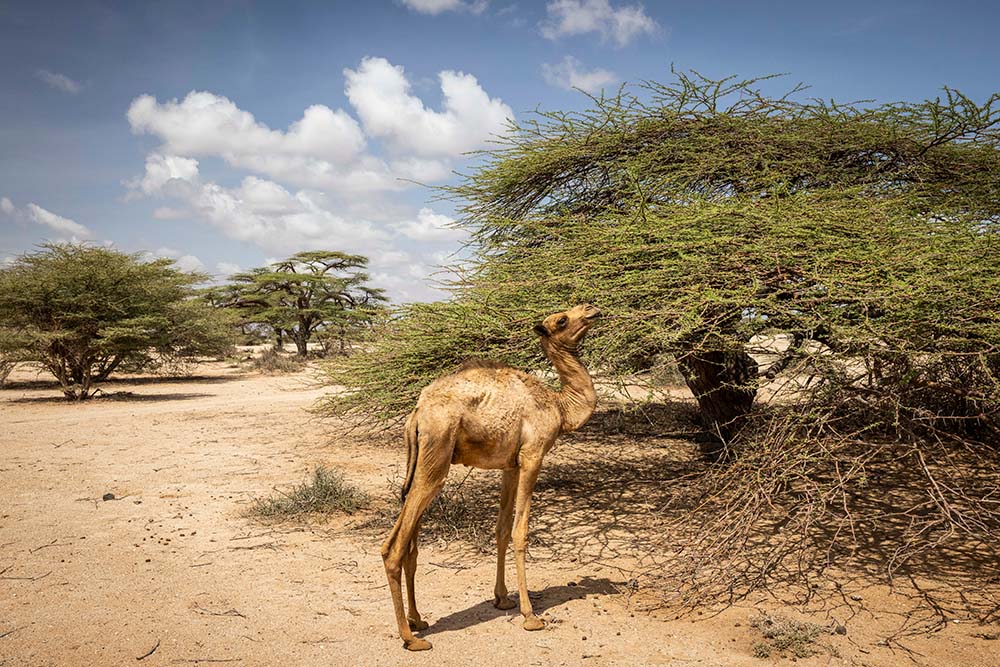
FUN FACT Camels actually originated in North America about 40 to 50 million years ago. The original of the species, called Protylopus, wasn’t much bigger than a Jack Russel and roamed the area now known as the Dakotas. Over time they evolved and made their way to Eurasia, back when when the continents were still connected.
A big year
According to the UN, 2024 is International Year of Camelids, a genus of mammal that also includes Alpaca and Llamas. At the launch event in January, FAO Director-General QU Dongyu underscored the cultural and environmental importance of camelids.
“Even in the most extreme climatic conditions, they produce milk, meat, fiber and organic fertilizer, and provide transport, boosting food security, nutrition, and livelihoods while helping to conserve fragile ecosystems,” he said.
That’s quite a big reputation to uphold, but we think our lanky split-lipped friends not only deliver the goods, but they do so with an elegance and grace that effortlessly reflects their “Ship Of The Desert” sobriquet.
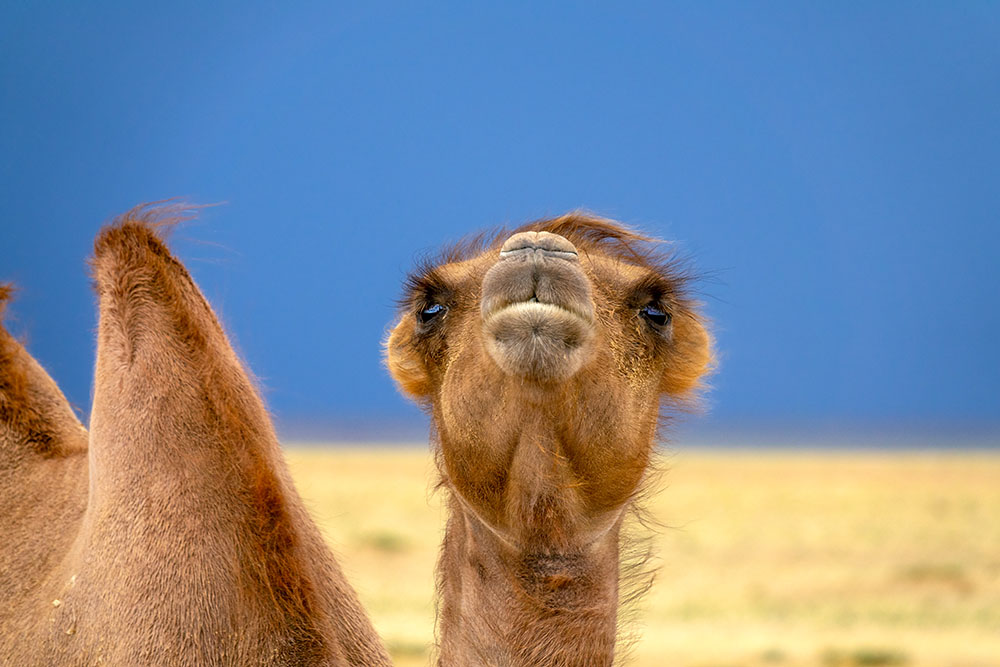
One hump or two?
While the dual-humper, officially known as the Bactrian Camel, has widely featured in popular culture through the years, it’s prevalence today is limited mostly to Mongolia and the steppes of Central Asia. The Dromedary, with it’s single hump, rules the Camel world. 30-plus million of this species stride across the sands of Africa, Asia, and Australia every day.
To mark this special year, we embarked on a quick virtual listening tour of four Concern countries to hear from some colleagues on their and thoughts and experiences of these magnificent long-legged lopers.
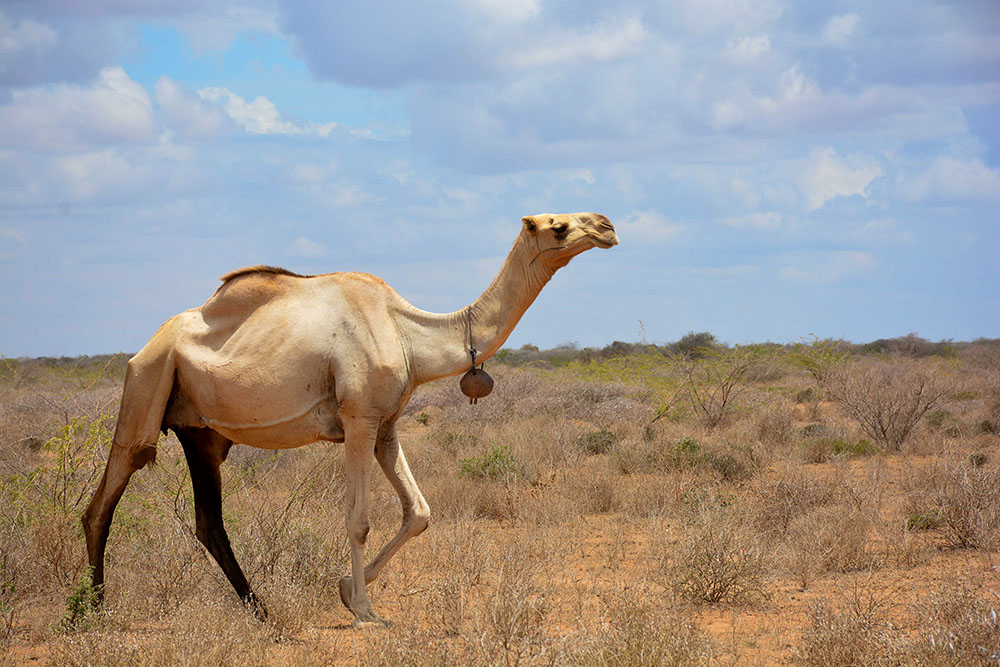
FUN FACT The Australian Camel fraternity is mostly feral, and numbers about 500,000. According to our man in Pakistan, Shafqat Ullah, his country is their ancestral home. Unfortunately, these outback outlaws have caused quite a bit of environmental destruction and as such are perhaps the one blemish on the Camel’s otherwise spotless reputation.
A four-legged banking system
Our Program Director in Kenya is Hassan Olow, a man with a deep family connection to camels going back at least 4 generations. His people are Pastoralists, grazing their caravans (the appropriate term for a group of Camels) across large areas of pasture, sometimes referred to as rangelands. Although most of his time these days is spent behind a desk in Nairobi, Hassan still owns Camels and spends time looking after them whenever possible.
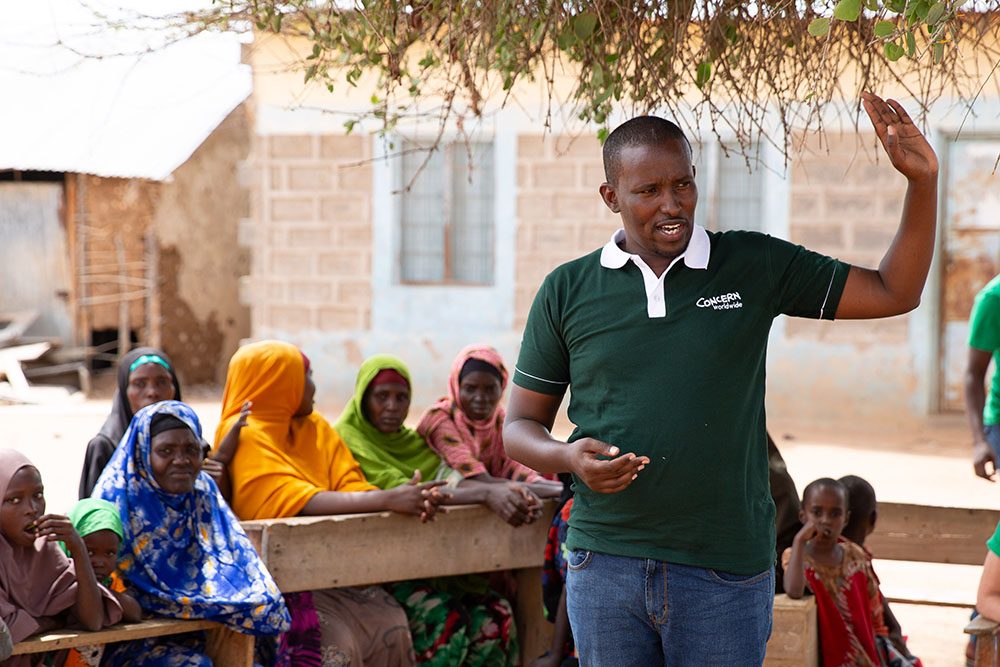
“Camels are to Pastoralists what land is to farmers,” he says. “They’re a store of value. Pastoralists rarely sell Camels unless it’s extremely necessary or for strategic reasons. In Kenya, the majority of Concern’s work is in ASAL settings and there the Camel is considered the most important livestock.”
Wait, what’s an ASAL? Well, it stands for Arid and Semi Arid Lands, which actually comprise about 16% of the world’s land mass. It’s prime Camel country — exactly what these babies were designed for.
Kenya is around 80% ASAL, with about 50% of that almost entirely arid — essentially desert with some scrub. Camels, with their ability to go for long periods without water and eat pretty much anything that grows, can both survive and thrive in these conditions.
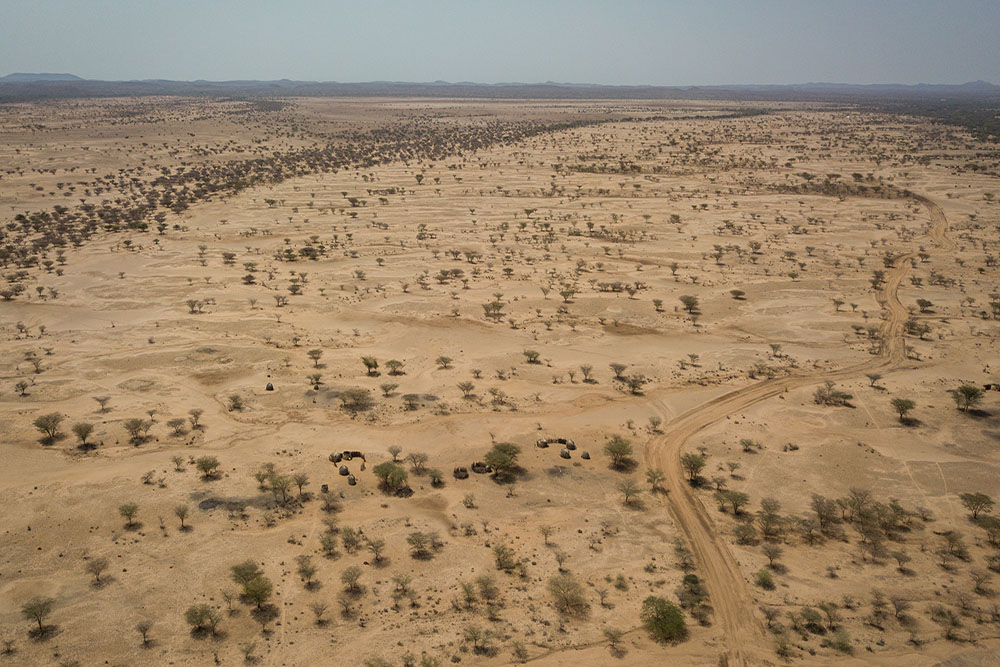
FUN FACT The Gabbra community in Northern Kenya strengthens its social ties through a Camel insurance system that ensures one family’s camels are distributed in 10 or more other family Camel caravans. So if one herd is raided, almost everyone is affected but most of the owners would have only lost a few of their animals. It is a traditional risk reduction mechanism.
A food security powerhouse
The Thar desert in Pakistan spans an area of more than 100,000 square miles and occupies a large part of Sindh Province, where Concern has extensive humanitarian and development operations. Dr. Mazhar Alam is our Health and Nutrition Advisor and he says that Camels play a big role in the food security of communities served by Concern. “A well-fed Camel can yield from 2 to 4 gallons of milk per day, which is nutritionally super rich compared to cow’s milk, and well tolerated by humans. Camel milk can also be used for making yogurt, butter, and ghee. And, of course, the meat is also a valuable source of nutrition, low in fat and cholesterol.”
But Camels contribute to the food chain in many other important ways too. People use them for drawing water from wells, cultivating and leveling land, working mini-mills for oil extraction, grinding wheat, corn, and other grains, crushing sugarcane, and pulling carts for transportation of goods to market. Their poop also makes fine fertilizer. These guys are superstars of the food production ecosystem.
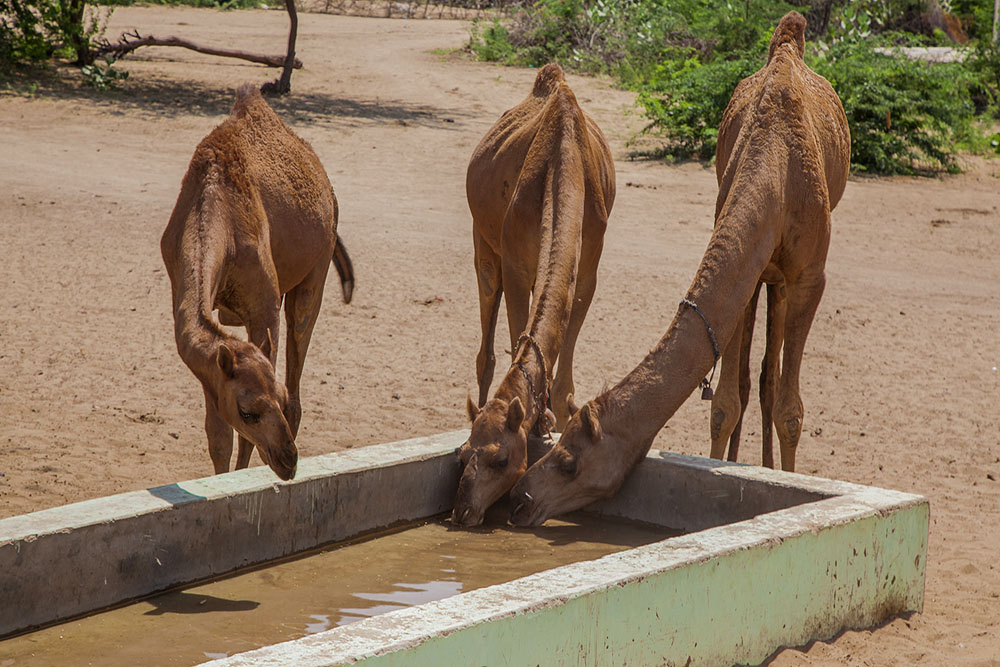
A mysterious mate
Believe it or not, Chad is the world’s number one Camel country (depending on who you ask!) and is home to nearly 10 million of these oversized quadropeds. This vast country spans that brown/green line you see on satellite images dividing North and Central Africa at around the 15th parallel. Classic Camel territory, and also source of some of the best camel quotes from Concern colleagues:
Nadji Tosmadengar says, “The Camel is an animal full of mystery. When we were little, we searched in the traces left in his path to hope for silver coins and grains of millet. They mate lying down like humans and in the dark. They don't do it in public. If you catch them mating they may attack you.”
Mahamat Moucktar declares: “For me the Camel represents resistance and resilience, and its milk is therapeutic.”
And this beauty from Dounia Clemence: “In my neighborhood as they pass by the children sing ‘Djamal, Djamal, Djamal kachouma Affine, So moula Halou’ (The Camel has a stinky mouth but its sauce is succulent!)”
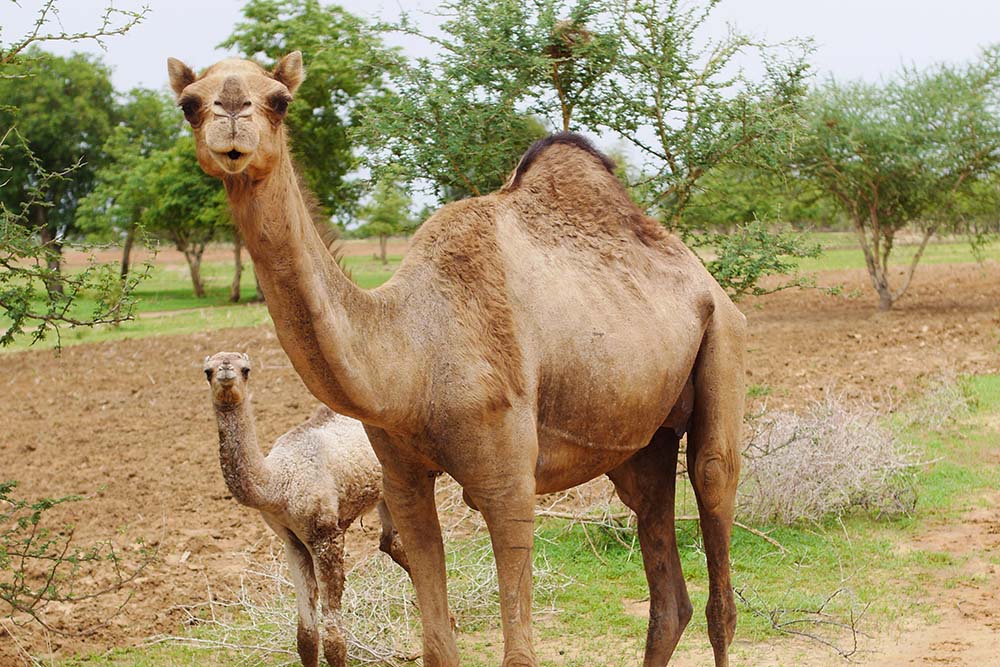
FUN FACT Paris, France will this year host a Dromedary Parade, to mark International Year of Camelids. Organizers say that each dromedary will represent a country, a tribe, or an ethnic group, and will be accompanied by representatives in traditional dress.
Fueling a region
Clinging to the Horn of Africa, Somalia has a human population of 18 million and a Camel population of about 7 million. Legend has it that dromedaries were first domesticated in these parts, and they’ve become something of a cultural icon. In a country beset by poverty, Camels are a source of wealth. Speaking to AFP, one livestock trader in the northern city of Hargeisa said, “We don't have crude oil in this country. Camels are our crude oil."
Abdirizak Haji Aden oversees logistics for Concern Worldwide in Somalia, including the management of a fleet of diesel and petrol-powered trucks and cars. But his heart is with the Camels. He and his family have been involved with them for generations. "They are truly remarkable creatures that deserve our respect and appreciation." Haji enjoys nothing more than a deep draught of Camel milk, with the added bonus that it's a powerful booster for the immune system.
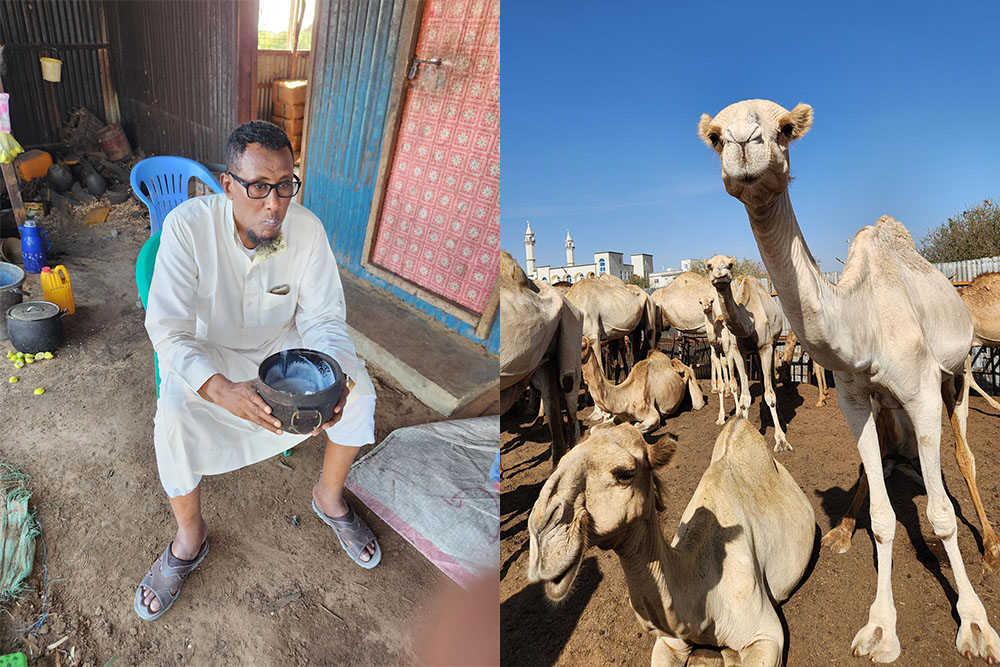
FUN FACT The Camel plays a central role in Somali culture, with dowries often quantified and paid in Camels and "blood feuds" settled in Camel terms. Camel ownership is an indicator of social status.
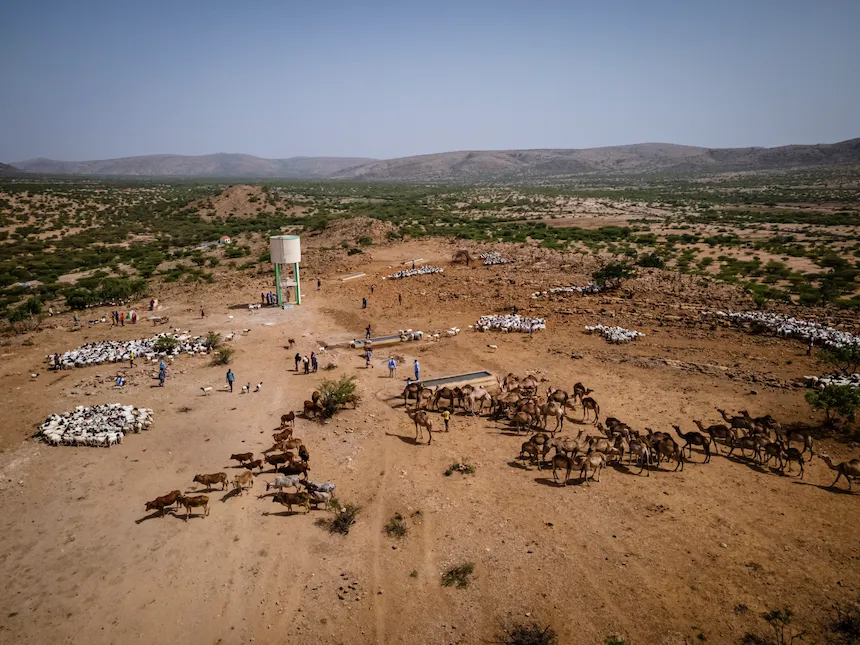
Camel challenges: climate… and people
Although Camels have proven to be massively adaptable, climate change may yet present their greatest challenge. A deadly drought in the Horn of Africa from 2019 to 2023 had devastating consequences, as rangelands turned to dust and became an open graveyard for hundreds of thousands of animals.
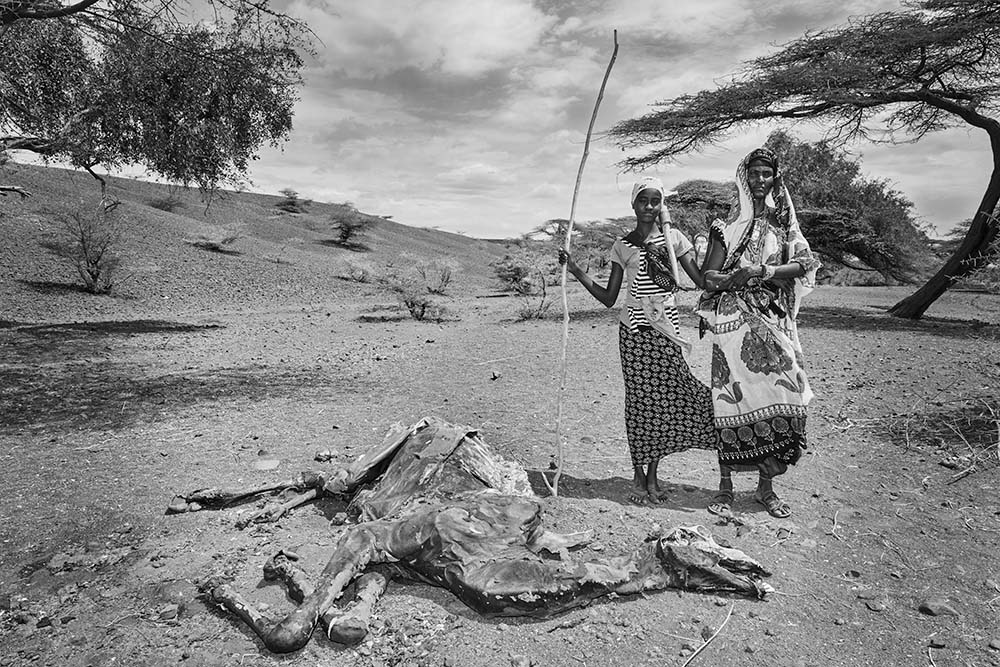
Our famous photographer friend, Alexi Lubomirski, created this stunning image on a visit to Kenya in late 2022 and later reflected: “The mighty Camel has always represented for me the last bastion of the desert. The last one standing. This once magnificent creature decomposing at my feet was unable to withstand a drought that has ravaged this region for the last three years. Antut told us that she used to have over 100 animals and that the last few Camels had recently died.
Ironically, when the rains did finally arrive, they came in the form of violent downpours and many more camels, weakened by hunger, died of exposure.
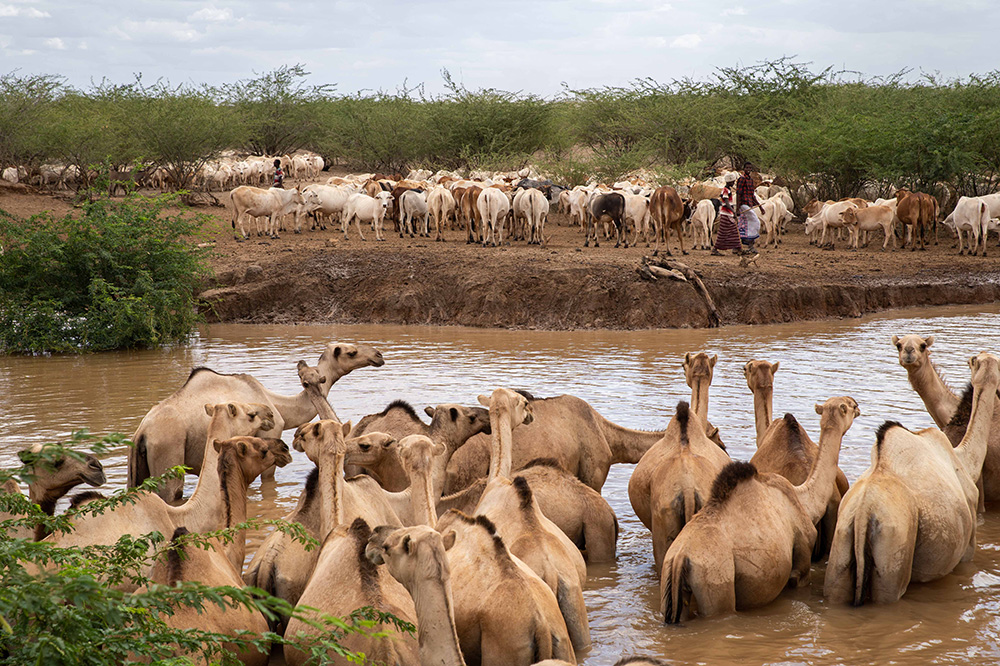
Additionally, grazing routes are increasingly affected, as more people permanently own land and erect fences to prevent access. According to Hassan Olow, about 10% of Kenya’s Camel population has been moved to enclosed ranches near the coast. “Unfortunately this has exposed the Camels to more diseases and this requires a change in herding practices and more veterinary intervention.”
FUN FACT The Camel has played a role in the history of most major religions, serving as everything from the mode of conveyance for the Ark of the Covenant to transport-method-of-choice for the Maji, Lord Hanuman, and the Prophet Muhammad.
What have you done for me lately?
As we mentioned above, Concern’s mission is primarily aimed at the welfare of humans, but by extension that sometimes means we help Camels too.
For example, during a recent drought in the Tharpakar district of Pakistan, Concern used USAID funding to provide special multi-nutritional feed and vaccination and deworming services for Camel herds in peril.
Similarly, some years back, providing fodder for communities in Ethiopia affected by a vicious drought helped save many animals that might have otherwise perished.
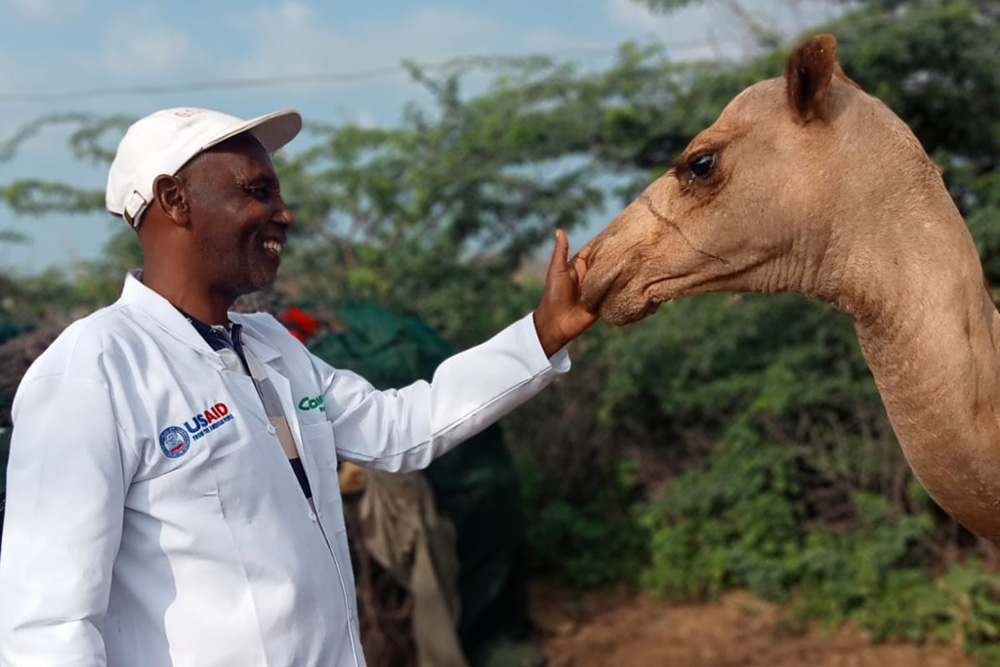
But it's definitely the Kenya team that win the Concern Camel Cup 🏆. Here’s just some of what they’ve been up to in recent years:
🐪 Disease surveillance, de-worming, vaccination, and treatment
🐪 Facilitating agreements for the sharing of communal natural resources
🐪 Rehabilitating strategic water sources
🐪 Supporting livestock market associations
🐪 Helping to build more resilient and more productive breeds
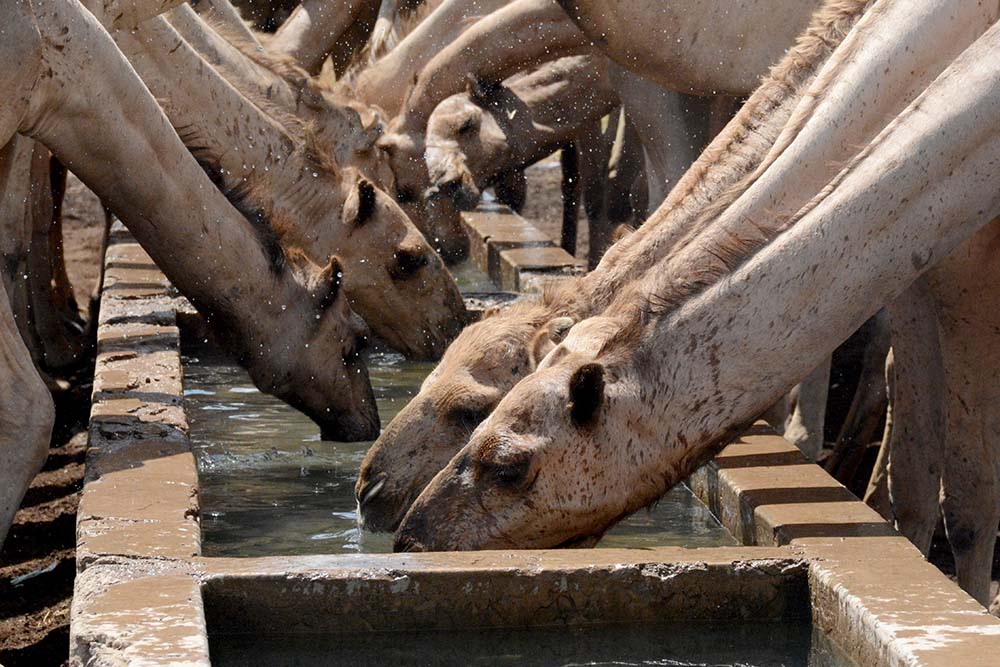
FUN FACT Camel racing has been a thing for many centuries, especially in the Middle East and the Bedouin culture. Today, it is a high-value spectator sport, with some events televised for a global audience of millions. Camel owners and trainers use advanced techniques such as DNA profiling, advanced training equipment, and even drones to train camels and improve their performance. High-end racing Camels can be worth up to $10 million.
You may have noticed that we have capitalized the Camel throughout this article, which flies in the face of accepted grammatical best practice. On this occasion we are prepared to take the flak, in the belief that this noble, hardworking, adaptable creature deserves no less than a capital C.
Long live the Camels and all who ride, herd, farm, and care for them.
